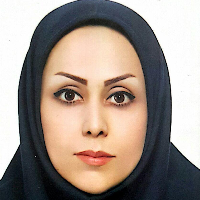Runoff simulation with HEC-HMS model and sensitivity analysis of flood hydrograph trending parameters using differential evolution algorithm (case study: Merck River catchment)
Simulation of runoff and hydrograph production is widely used in analyzing the behavior of basin against precipitation, calculating the volume and peak of floods, the amount of losses and the possibility of designing the dimensions of structures. HEC-HMS is one of the most common simulator models In this study, with the aim of analyzing the sensitivity of flood hydrograph routing parameters in the Merk River basin, first, the physiographic characteristics of the basin were constructed with the HEC-GeoHMS plugin in the Arc GIS environment and the DEM map of the area and they were called in the HEC-HMS model. then by entering the three flood event data and its corresponding precipitation, computational hydrograph is created. For calibration, at first by trial and error, the model was placed in a suitable range which can be optimized using differential evolution algorithm. In optimizing the target function to make the average at least of the sum of squares of error, the K and X Muskingum parameters, which are particularly sensitive to hydrograph production, placed the model optimization and its performance in the excellent category so that for the event of November 2015 floods and a stop of 50 iteration (NSE=0.871, PBias=25.52, RMSE=0.4, NRMSE=2.63), for the event of March 2016 floods (NSE=0.731, PBias=28.82, RMSE=0.5, NRMSE=1.01) and in February 2020 (NSE=0.834, PBias=7.96, RMSE=0.4, NRMSE=0.95) which indicate an excellent performance of the model after optimization of the Muskingum coefficients by differential evolution algorithm (DE).
-
Monitoring water level changes in Hashilan wetland using remote sensing
Sahel Shirmohammadi, Maryam Hafez Parast Mavaddat *, Ali Bafkar
Journal of Advanced Technologies in Water Efficiency, -
Nash Bargaining Optimization of Released Water from a Reservoir Dam under Climate Change Conditions (Case Study: Doiraj Dam)
Z. Pourkheirollah, M. Hafezparast Mavaddat*, S. E. Fatemi
Journal of Agricultural Science and Technology, May 2023



